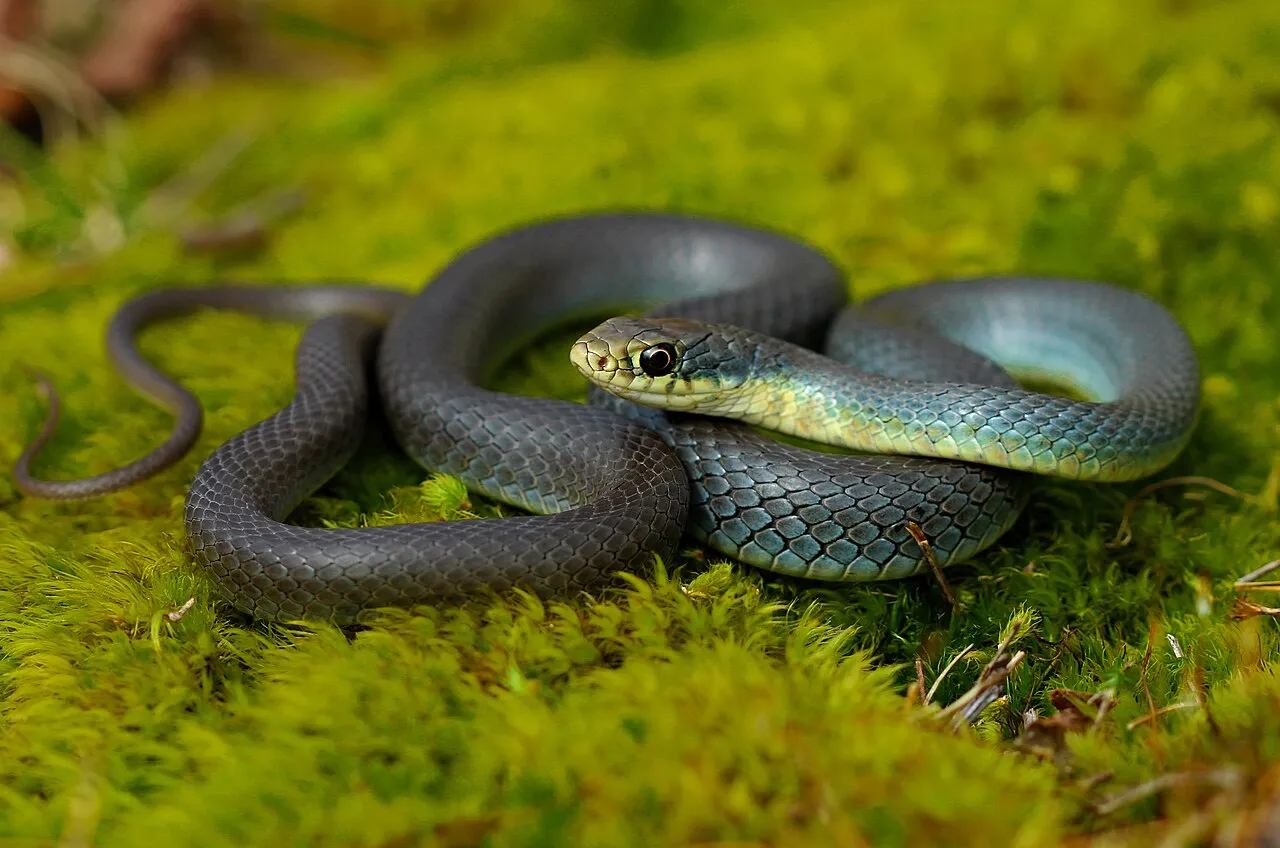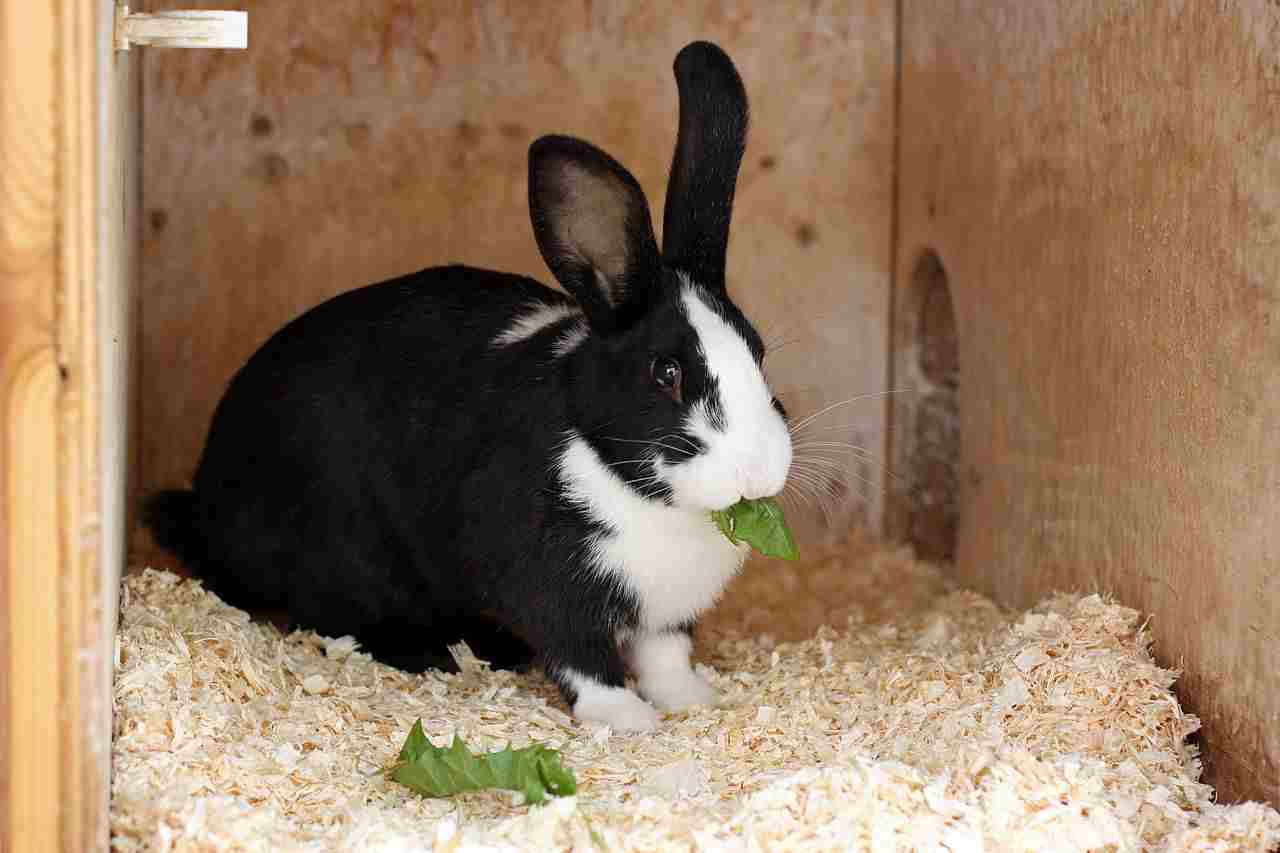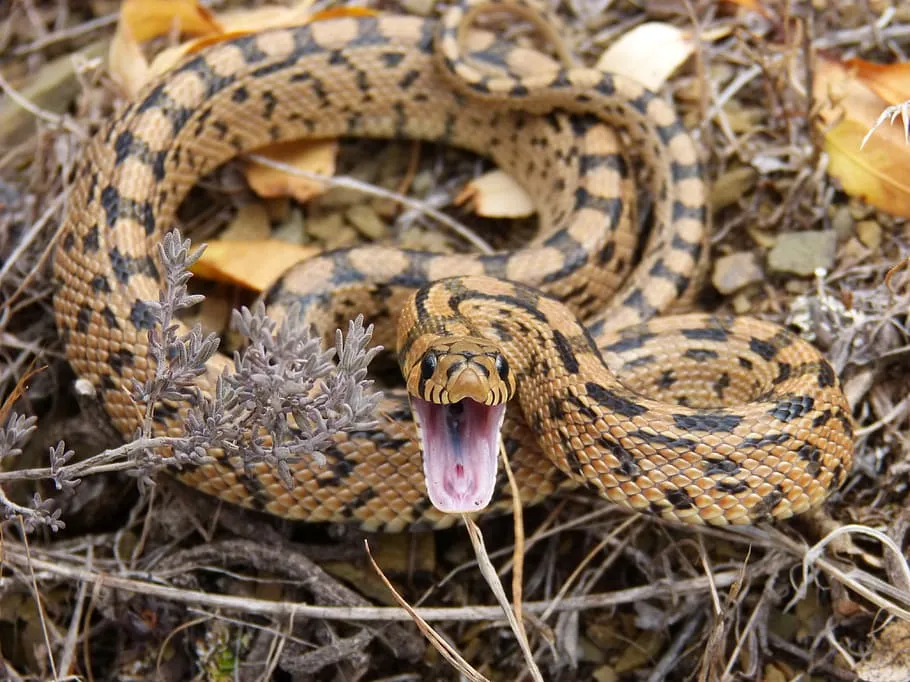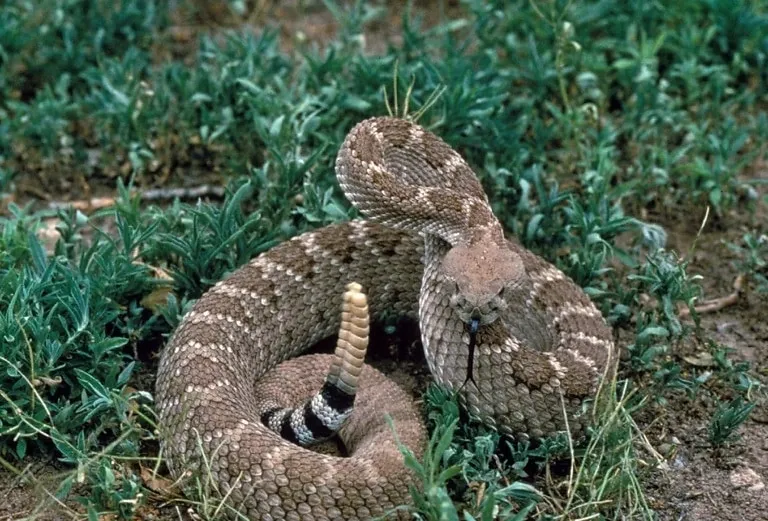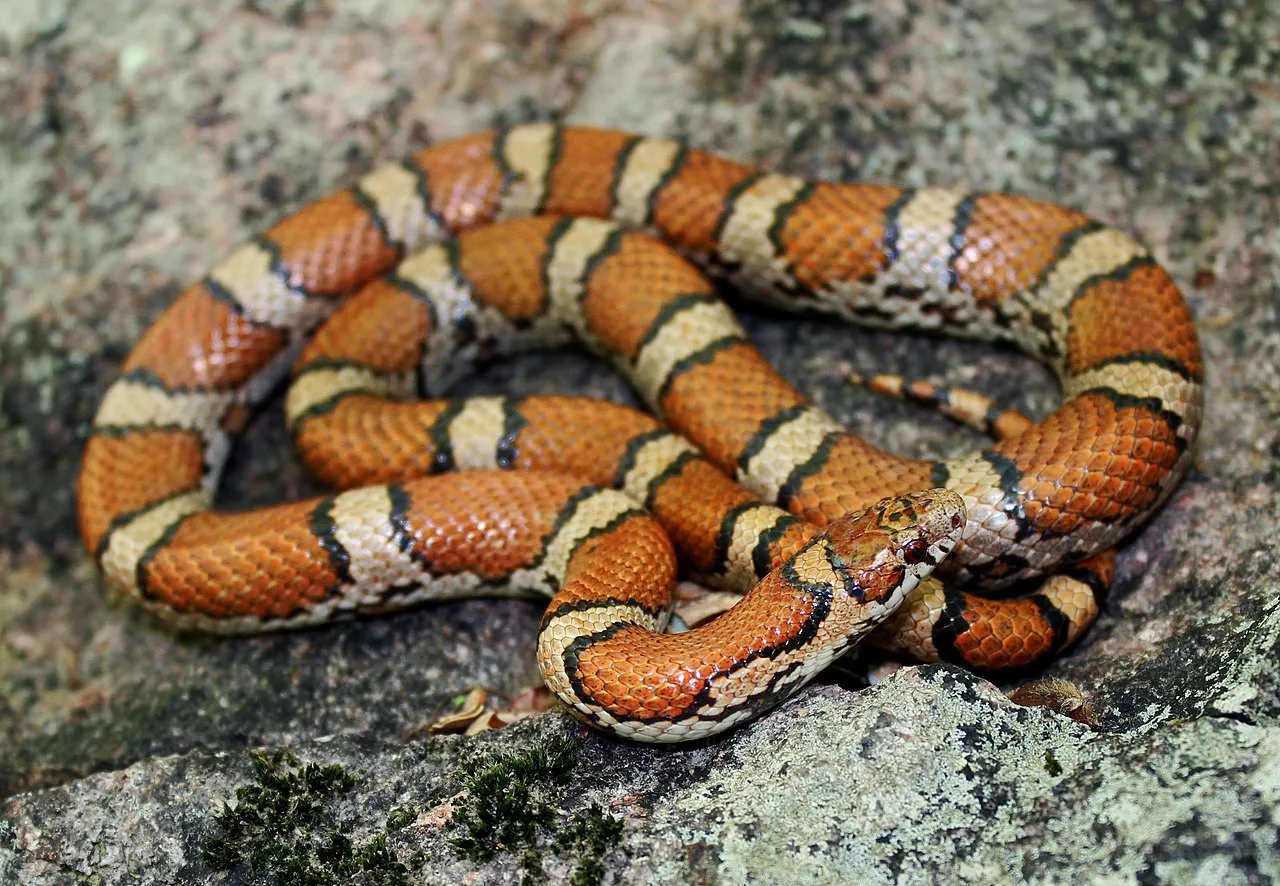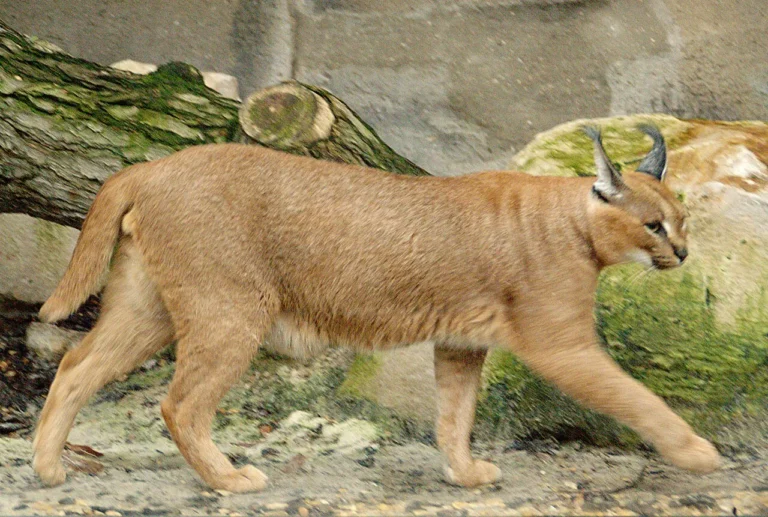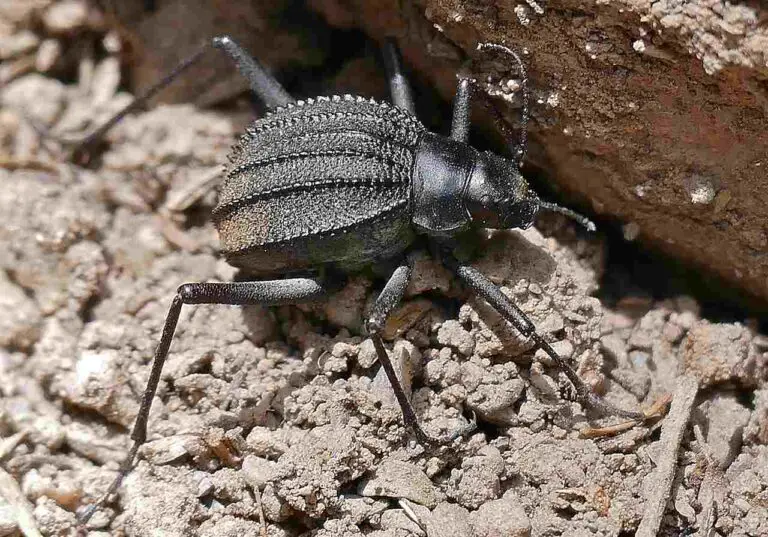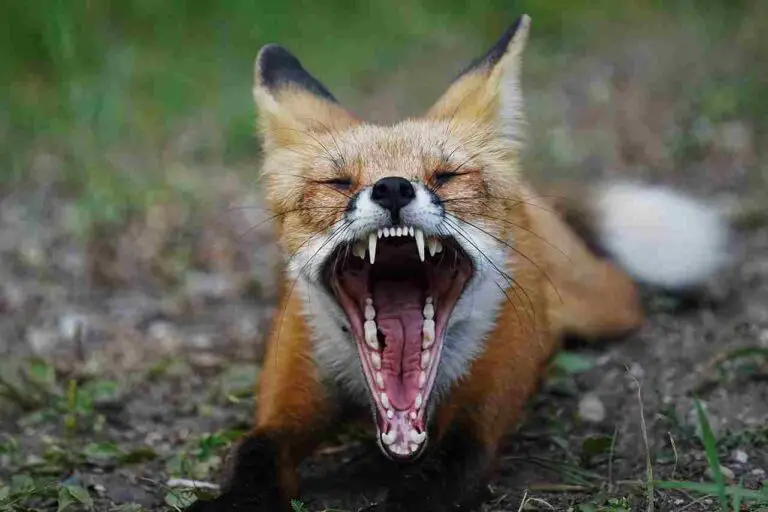Black Diamondback Rattlesnake Facts, Characteristics
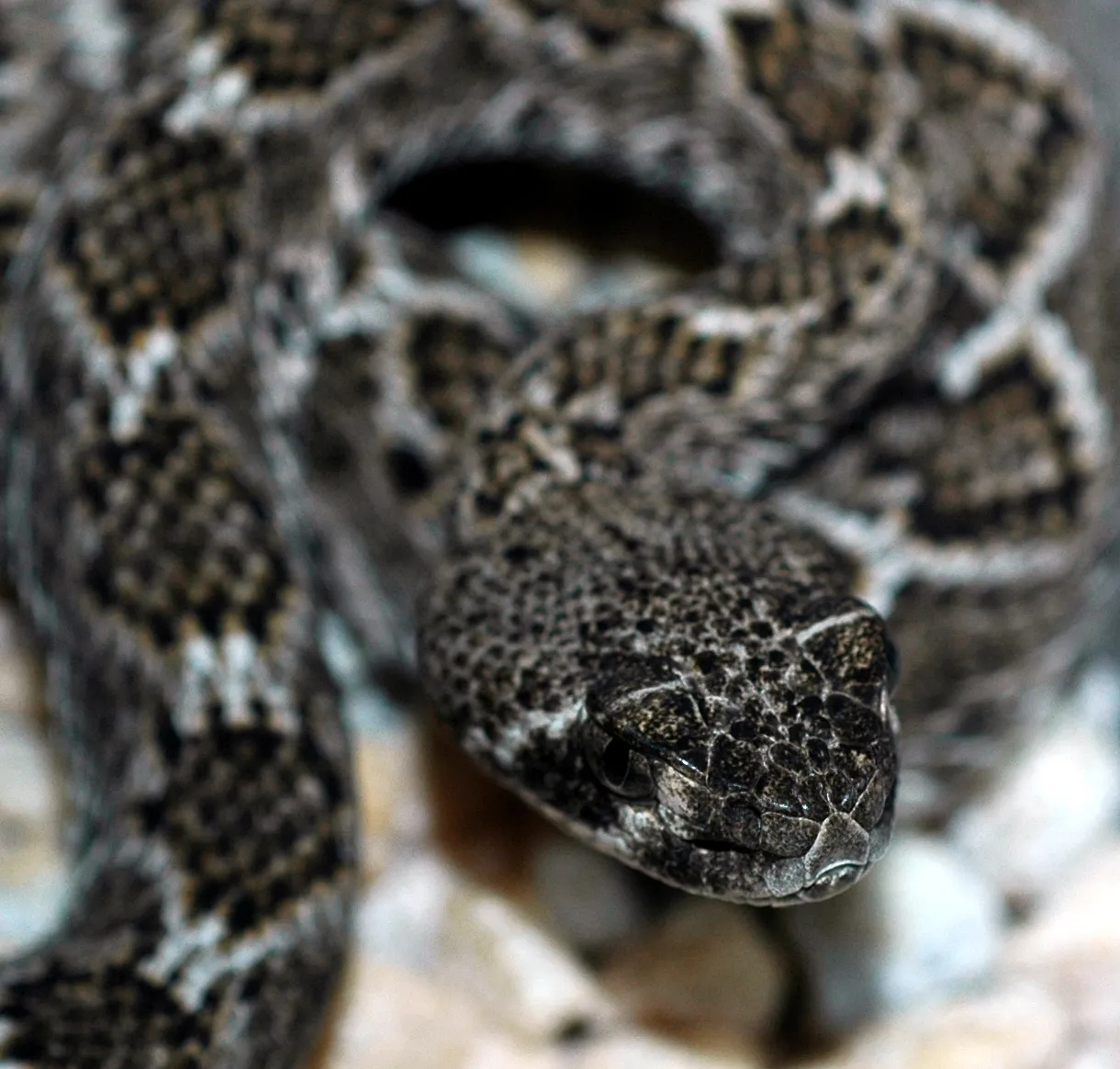
*Facts About Black Diamondback Rattlesnake
- The black diamondback rattlesnake is a subspecies of the western diamondback rattlesnake.
- Adults typically measure between 3 to 5 feet in length.
- They weigh around 2 to 4 pounds.
- They have black or dark brown coloration with diamond-shaped patterns.
- Their hollow fangs are connected to venom glands.
- They can deliver venom with a bite force of 400-800 pounds per square inch.
- Their diet primarily consists of small mammals like rodents and rabbits.
- They hunt solitary and are active mostly at night.
- They produce a rattling sound by vibrating their tail segments.
- They prefer habitats like deserts, grasslands, and rocky areas.
- They give birth to live young after a gestation period of 5-6 months.
- Their average lifespan in the wild is 10-20 years.
- They possess adaptations like venomous fangs and heat-sensitive pits.
- Their conservation status is of least concern, but they face localized threats.
- They are not suitable for domestication or pet keeping.
| Criteria | Summary |
| Scientific Classification |
The black diamondback rattlesnake (Crotalus cerberus) belongs to the Animalia kingdom, Chordata phylum, Reptilia class, Squamata order, Viperidae family, and Crotalus genus.
|
| Subspecies |
It’s a subspecies of the western diamondback rattlesnake, indicating localized adaptations and genetic differentiation.
|
| Size and Weight |
Adults are typically 3-5 feet long and weigh 2-4 pounds, influencing prey selection and potential threats to humans and prey species.
|
| Appearance and Identification |
Identified by black or dark brown coloration with distinct diamond-shaped patterns, aiding in species recognition and camouflage for predator avoidance.
|
| Dentition and Bite Force |
Possess hollow fangs connected to venom glands, with a bite force of 400-800 psi, enabling efficient prey immobilization and predator avoidance.
|
| Diet |
Primarily feeds on small mammals such as rodents and rabbits, controlling prey populations and influencing ecosystem balance.
|
| Behavior |
Solitary and nocturnal hunters employing ambush techniques, minimizing intraspecific competition and maintaining ecosystem stability.
|
| Sounds/Vocalization |
Produces a rattling sound by vibrating tail segments, serving as a warning signal to potential threats and facilitating coexistence within the ecosystem.
|
| Habitat |
Inhabits a variety of ecosystems including deserts, grasslands, and rocky outcrops, with a preference for areas providing ample cover for shelter and hunting.
|
| Geographic Range and Distribution |
Native to southwestern United States, with implications for conservation priorities and habitat management.
|
| Tracks |
Leaves distinctive tracks characterized by parallel lines formed by ventral scales dragging, aiding in assessing movements and population densities.
|
| Reproduction |
Ovoviviparous, giving birth to live young after a gestation period of 5-6 months, influencing population dynamics and genetic variability.
|
| Lifespan |
Average lifespan of 10-20 years in the wild, impacting population turnover rates and ecosystem stability.
|
| Major Adaptations |
Possesses adaptations including venomous fangs, heat-sensitive pits, and camouflaged coloration, enhancing survival and apex predator role.
|
| Conservation Status |
Currently of least concern, but facing localized threats such as habitat loss and human persecution, emphasizing the need for conservation efforts.
|
| Domestication and Suitability as a Pet |
Not suitable for domestication or pet keeping due to venomous nature and specialized habitat requirements, highlighting the importance of habitat preservation and minimizing human-wildlife conflicts.
|
1. Scientific Classification:
Kingdom: Animalia
Phylum: Chordata
Class: Reptilia
Order: Squamata
Family: Viperidae
Genus: Crotalus
Species: C. cerberus
2. Subspecies:
Details: The black diamondback rattlesnake (Crotalus cerberus) is a subspecies of the western diamondback rattlesnake (Crotalus atrox).
Importance: Understanding subspecies helps in delineating population dynamics, genetic diversity, and evolutionary relationships within species.
Ecological Implications: Subspecies differentiation may indicate localized adaptations to environmental conditions, influencing habitat preferences and resource utilization.
3. Size and Weight:
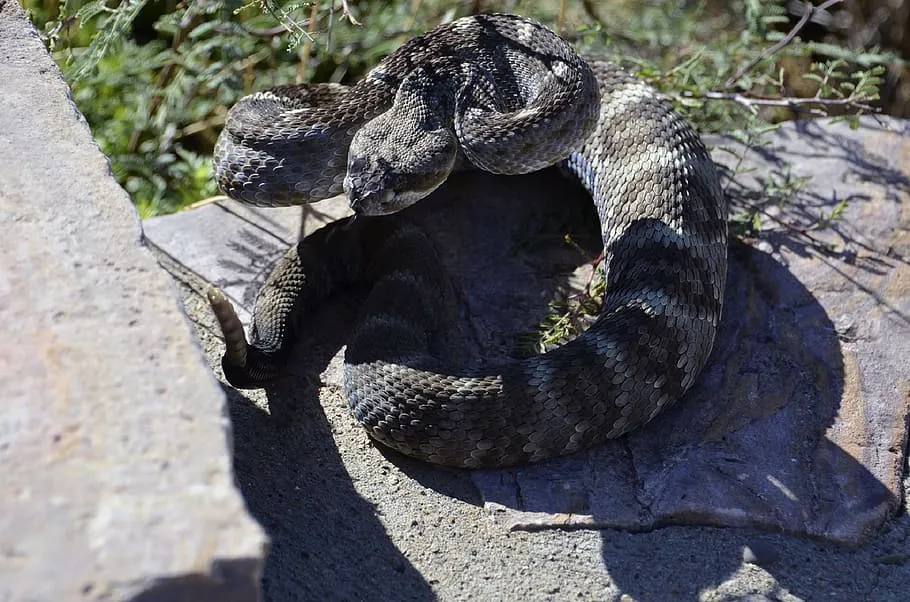
Details: Adults typically measure between 3 to 5 feet (0.9 to 1.5 meters) in length and weigh around 2 to 4 pounds (0.9 to 1.8 kilograms).
Importance: Knowledge of size and weight aids in species identification, understanding ecological roles, and assessing potential threats to humans and prey species.
Ecological Implications: Size and weight influence prey selection, energy requirements, and interactions within the ecosystem, affecting predator-prey dynamics and trophic cascades.
4. Appearance and Identification:
Details: The black diamondback rattlesnake is characterized by a black or dark brown coloration with distinct diamond-shaped patterns along its back.
Importance: Unique physical features facilitate species recognition, aiding in scientific research, conservation efforts, and public awareness.
Ecological Implications: Camouflage patterns help in predator avoidance and prey ambush, contributing to the rattlesnake’s survival and role as an apex predator in its habitat.
5. Dentition and Bite Force:
Details: Black diamondback rattlesnakes possess hollow, retractable fangs connected to venom glands, enabling efficient injection of venom. Their bite force ranges from 400 to 800 pounds per square inch (psi).
Importance: Understanding dentition and bite force is crucial for assessing the snake’s predatory behavior, venom potency, and potential risks to humans and other animals.
Ecological Implications: Effective venom delivery aids in prey immobilization and digestion, influencing prey populations and community structure. Additionally, the threat of venomous bites shapes predator avoidance behaviors in potential prey species, impacting community dynamics.
6. Diet:
Details: The diet of the black diamondback rattlesnake primarily consists of small mammals such as rodents, rabbits, and occasionally birds.
Importance: Understanding dietary preferences helps in assessing the snake’s ecological role as a predator and its impact on prey populations.
Ecological Implications: By controlling prey populations, rattlesnakes help maintain ecological balance and prevent overgrazing or outbreaks of pest species, contributing to overall ecosystem health.
7. Behavior:
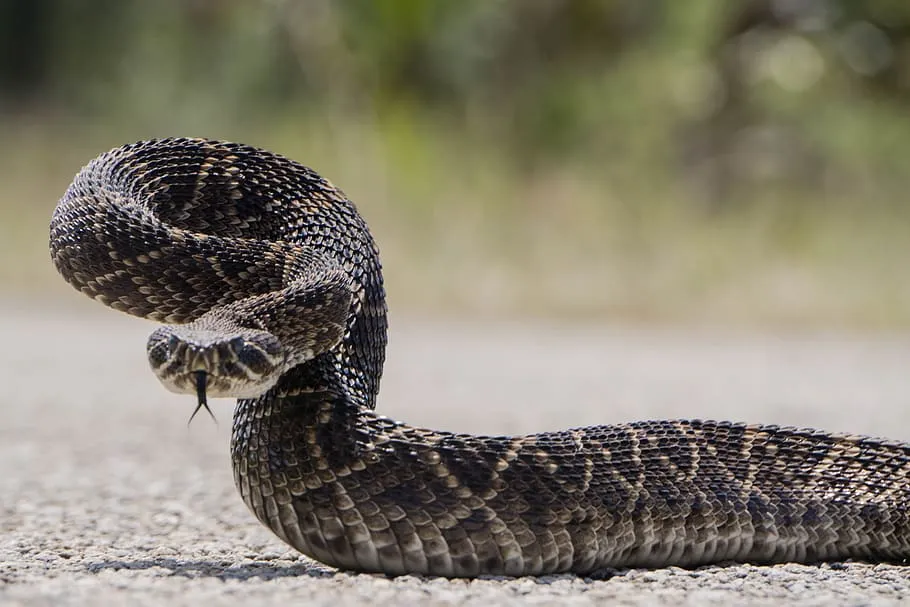
Details: Black diamondback rattlesnakes are primarily solitary and nocturnal hunters, relying on ambush techniques to capture prey.
Importance: Studying behavior provides insights into the snake’s foraging strategies, habitat use, and interactions with other species.
Ecological Implications: Nocturnal activity patterns reduce competition with diurnal predators and prey, while solitary behavior minimizes intraspecific competition, contributing to ecosystem stability.
8. Sounds/Vocalization:
Details: Black diamondback rattlesnakes produce a distinctive rattling sound by vibrating their tail segments, serving as a warning signal to potential threats.
Importance: Vocalization plays a crucial role in communication, aiding in predator deterrence and interspecific interactions.
Ecological Implications: Rattlesnake rattling behavior helps prevent unnecessary confrontations, reducing the risk of injury to both snakes and other animals, and facilitating coexistence within the ecosystem.
9. Habitat:
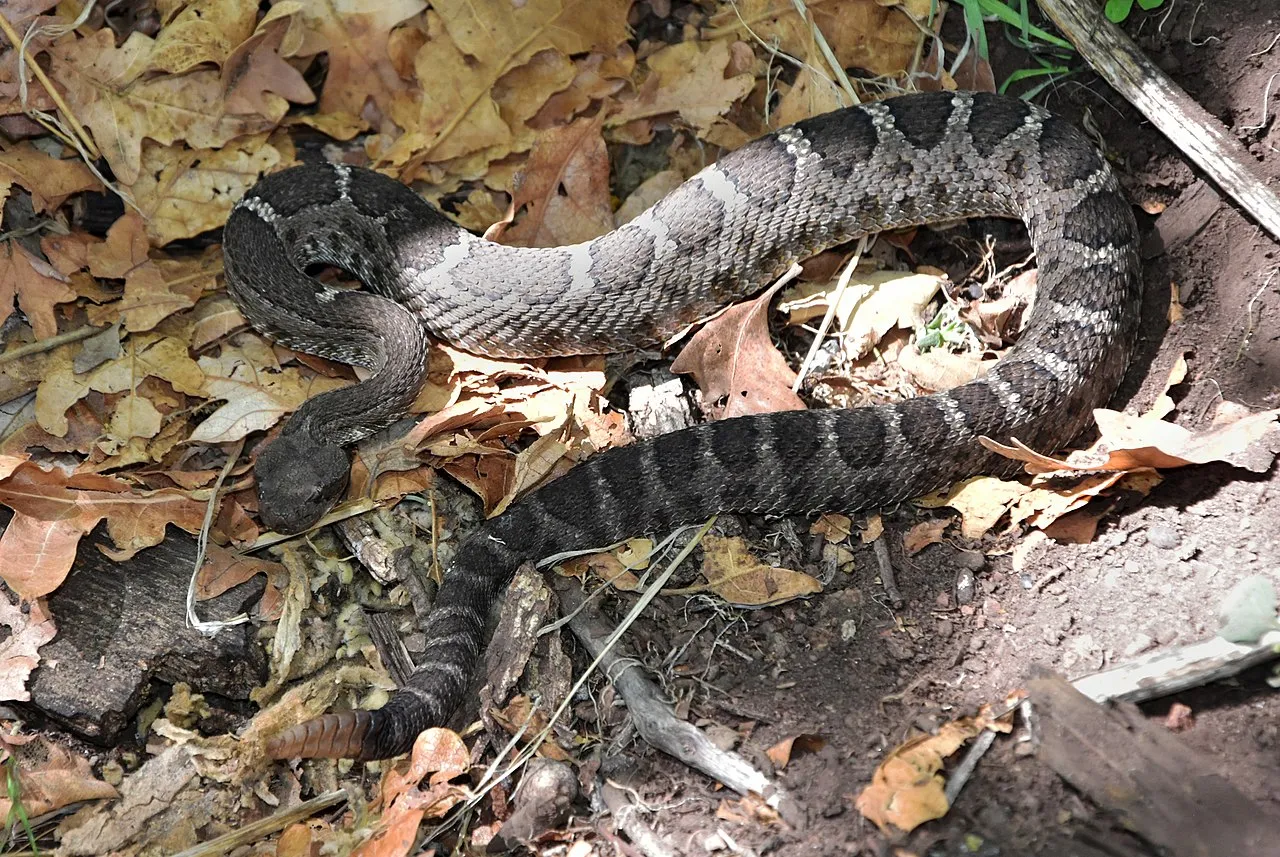
Details: These rattlesnakes inhabit a variety of ecosystems, including deserts, grasslands, scrublands, and rocky outcrops, preferring areas with ample cover for shelter and ambush hunting.
Importance: Understanding habitat preferences is essential for conservation planning, habitat management, and predicting species distributions.
Ecological Implications: Habitat availability and quality directly impact population size, genetic diversity, and species interactions, influencing ecosystem structure and function.
10. Geographic Range and Distribution:
Details: The black diamondback rattlesnake is native to southwestern United States, particularly found in regions of Arizona, New Mexico, and parts of Texas.
Importance: Knowledge of geographic range helps in assessing species distribution patterns, habitat suitability, and conservation priorities.
Ecological Implications: Understanding the spatial distribution of rattlesnake populations aids in identifying areas of high biodiversity, potential habitat fragmentation, and connectivity between populations, which are crucial for maintaining genetic flow and ecosystem resilience.
11. Tracks:
Details: Black diamondback rattlesnakes leave distinctive tracks characterized by a series of parallel lines formed by the dragging of their ventral scales, often visible in sandy or soft soil substrates.
Importance: Tracking provides insights into the snake’s movements, activity patterns, and habitat use, aiding in ecological studies and conservation efforts.
Ecological Implications: Monitoring track patterns helps assess population densities, habitat preferences, and potential corridors for dispersal, contributing to habitat management and wildlife conservation strategies.
12. Reproduction:
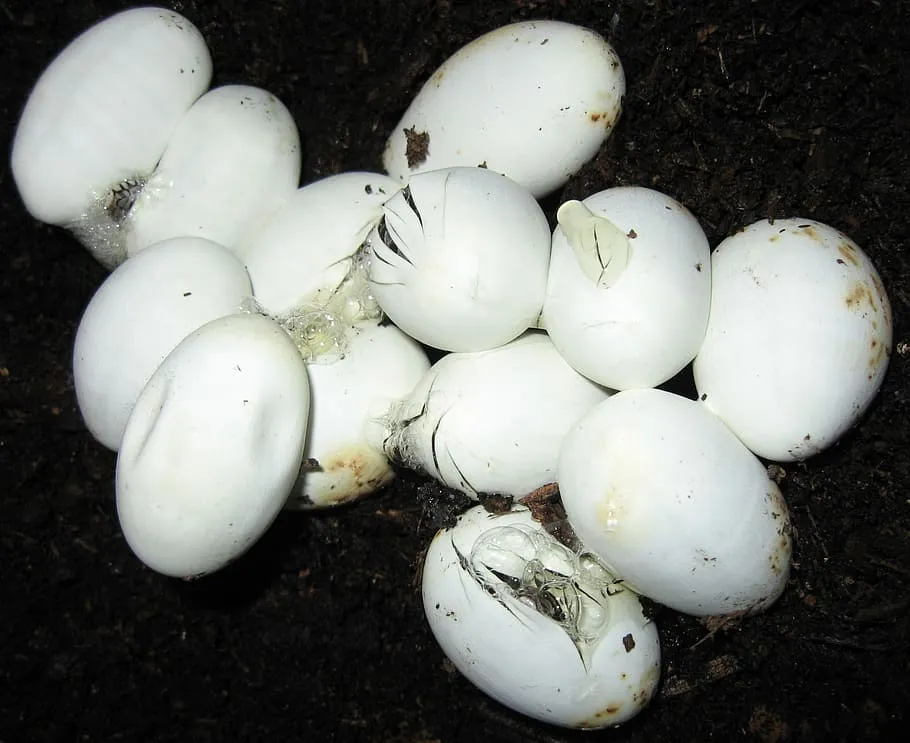
Details: Black diamondback rattlesnakes are ovoviviparous, with females giving birth to live young after a gestation period of approximately 5 to 6 months.
Importance: Understanding reproductive biology is essential for assessing population dynamics, reproductive success, and genetic variability.
Ecological Implications: Reproductive strategies influence population growth rates, demographic structure, and resilience to environmental pressures, shaping the species’ role within the ecosystem.
13. Lifespan:
Details: Black diamondback rattlesnakes have an average lifespan of 10 to 20 years in the wild, although some individuals may live longer in favorable conditions.
Importance: Knowledge of lifespan aids in population modeling, demographic studies, and understanding the cumulative effects of environmental factors on individual fitness and population dynamics.
Ecological Implications: Lifespan influences population turnover rates, genetic diversity, and ecosystem stability, highlighting the importance of long-term monitoring and conservation efforts for maintaining healthy rattlesnake populations.
14. Major Adaptations:
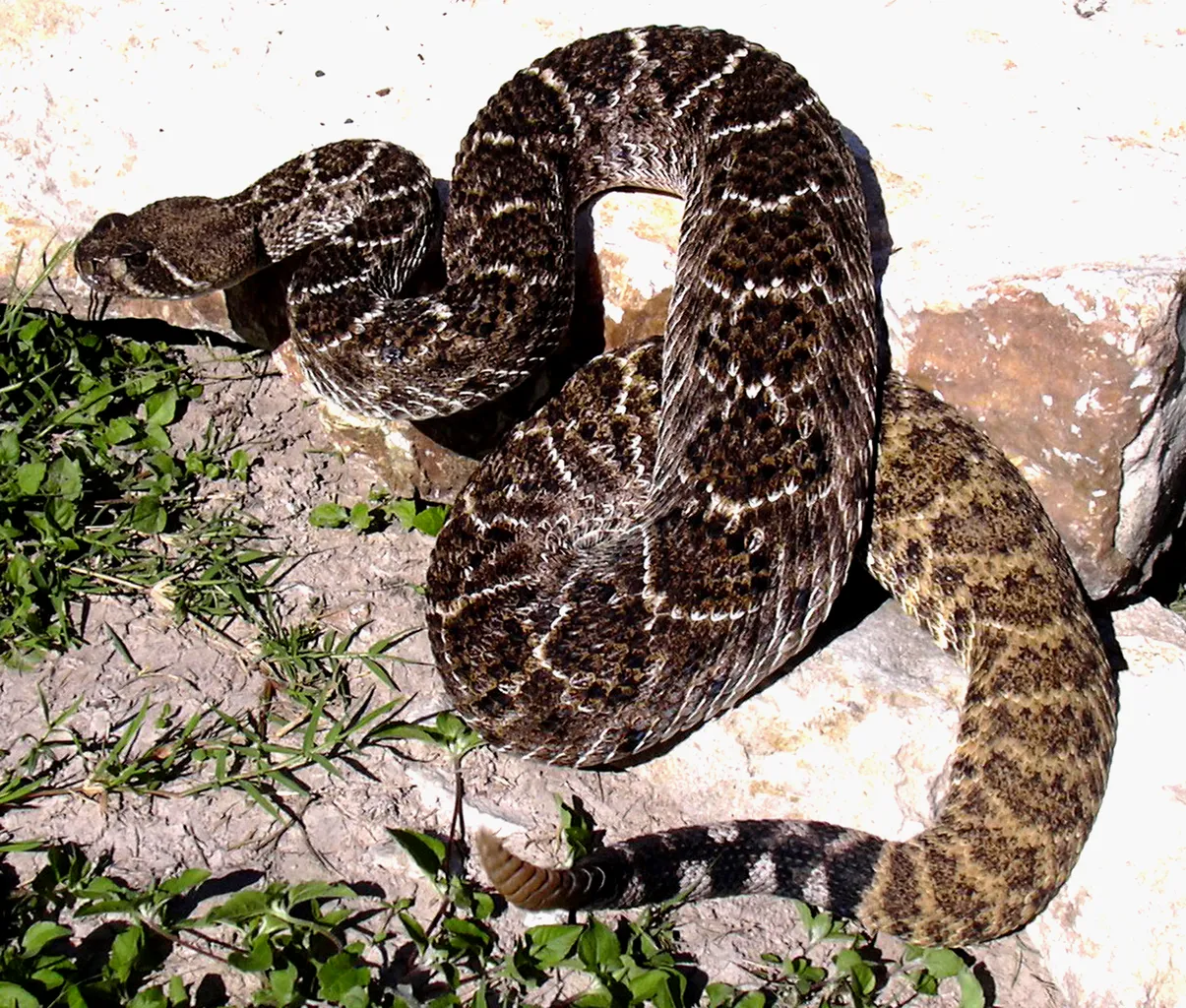
Details: The black diamondback rattlesnake possesses several adaptations for survival, including venomous fangs for prey immobilization, heat-sensitive pits for detecting warm-blooded prey in darkness, and camouflaged coloration for predator avoidance.
Importance: Adaptations enhance the snake’s ability to hunt efficiently, avoid predators, and thrive in its natural habitat.
Ecological Implications: These adaptations contribute to the rattlesnake’s role as an apex predator, influencing prey populations, predator-prey dynamics, and community structure within the ecosystem.
15. Conservation Status:
Details: The conservation status of the black diamondback rattlesnake is currently of least concern, although localized threats such as habitat loss, fragmentation, and human persecution may impact certain populations.
Importance: Assessing conservation status helps prioritize management actions, habitat protection, and research efforts to ensure the species’ long-term survival.
Ecological Implications: Conservation measures not only safeguard rattlesnake populations but also protect the integrity of their habitats and associated ecosystems, promoting biodiversity conservation and ecosystem resilience.
16. Domestication and Suitability as a Pet:
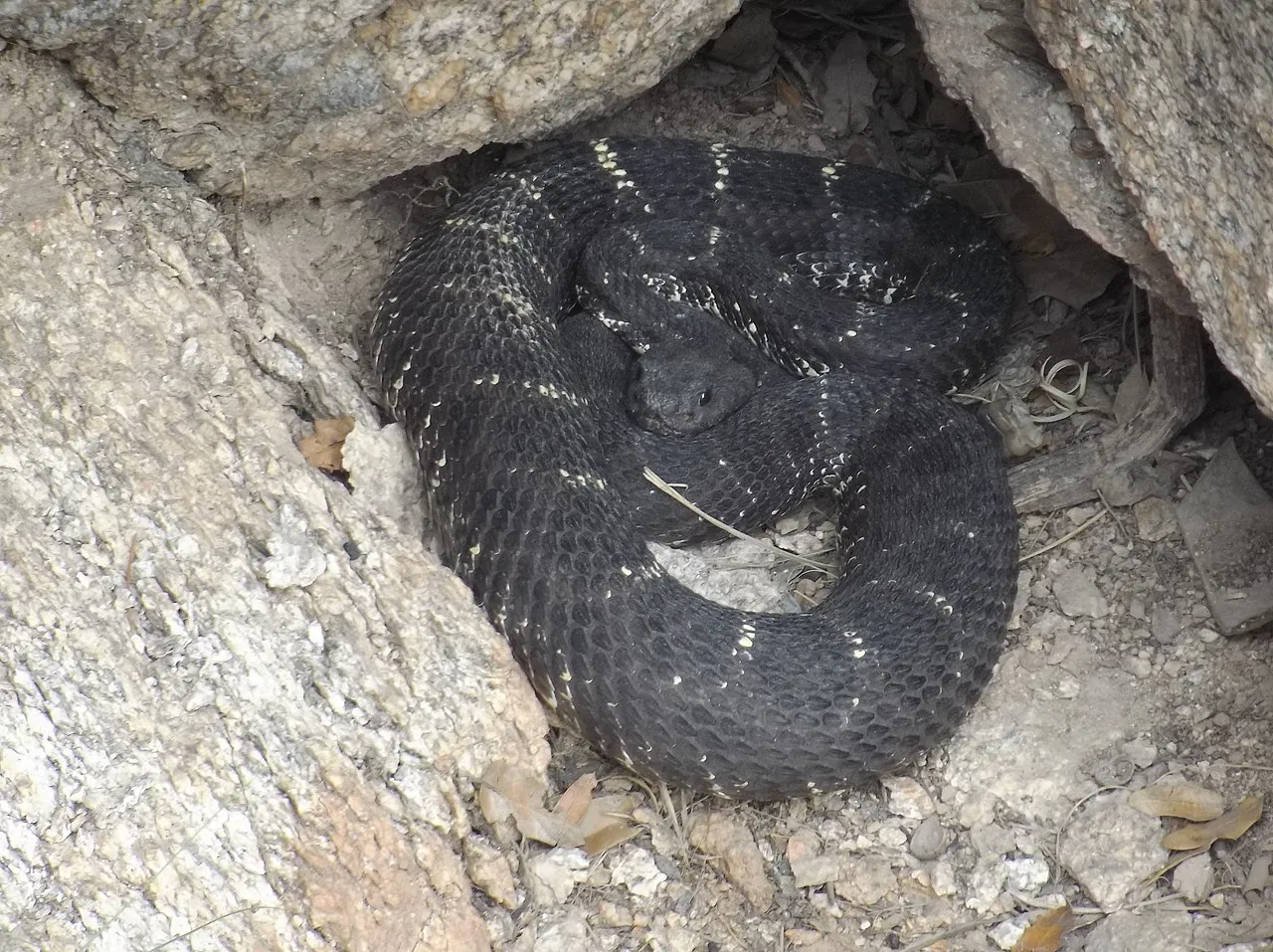
Details: Black diamondback rattlesnakes are not suitable for domestication and should not be kept as pets due to their venomous nature, specialized habitat requirements, and potential risks to human safety.
Importance: Recognizing the unsuitability of rattlesnakes as pets helps prevent irresponsible ownership, illegal trade, and human-wildlife conflicts.
Ecological Implications: By discouraging pet trade and captivity, conservation efforts focus on preserving rattlesnakes in their natural habitats, maintaining ecosystem balance, and minimizing anthropogenic threats to wild populations.
*Summary of Information On the Black Diamondback Rattlesnake
Scientific Classification:
Kingdom: Animalia
Phylum: Chordata
Class: Reptilia
Order: Squamata
Family: Viperidae
Genus: Crotalus
Species: C. cerberus
Subspecies:
Details: Subspecies of western diamondback rattlesnake (Crotalus atrox)
Importance: Understanding population dynamics and genetic diversity
Ecological Implications: Localized adaptations and habitat preferences
Size and Weight:
Details: Adults 3-5 feet long, 2-4 pounds
Importance: Species identification and assessing potential threats
Ecological Implications: Influence on prey selection and energy requirements
Appearance and Identification:
Details: Black or dark brown with diamond-shaped patterns
Importance: Facilitating species recognition and public awareness
Ecological Implications: Camouflage for predator avoidance and prey ambush
Dentition and Bite Force:
Details: Hollow fangs, venom glands, 400-800 psi bite force
Importance: Assessing predatory behavior and venom potency
Ecological Implications: Effective prey immobilization and predator avoidance
Diet:
Details: Primarily small mammals such as rodents and rabbits
Importance: Understanding ecological role as a predator
Ecological Implications: Controlling prey populations and ecosystem balance
Behavior:
Details: Solitary, nocturnal hunters relying on ambush techniques
Importance: Insights into foraging strategies and habitat use
Ecological Implications: Minimizing competition and maintaining ecosystem stability
Sounds/Vocalization:
Details: Distinctive rattling sound produced by tail vibration
Importance: Communication and predator deterrence
Ecological Implications: Preventing unnecessary confrontations and facilitating coexistence
Habitat:
Details: Inhabit deserts, grasslands, scrublands, and rocky outcrops
Importance: Assessing habitat suitability and conservation priorities
Ecological Implications: Impact on population size, genetic diversity, and ecosystem structure
Geographic Range and Distribution:
Details: Native to southwestern United States
Importance: Assessing species distribution patterns and habitat management
Ecological Implications: Identifying areas of high biodiversity and habitat connectivity
Tracks:
Details: Distinctive parallel lines formed by ventral scales dragging
Importance: Insights into movements and habitat use
Ecological Implications: Assessing population densities and habitat corridors
Reproduction:
Details: Ovoviviparous, giving birth to live young after 5-6 months gestation
Importance: Assessing population dynamics and reproductive success
Ecological Implications: Influence on population growth rates and genetic variability
Lifespan:
Details: Average lifespan of 10-20 years in the wild
Importance: Population modeling and understanding environmental effects
Ecological Implications: Influence on population turnover rates and ecosystem stability
Major Adaptations:
Details: Venomous fangs, heat-sensitive pits, camouflaged coloration
Importance: Enhancing survival and hunting efficiency
Ecological Implications: Apex predator role and influence on prey populations
Conservation Status:
Details: Least concern, but facing localized threats
Importance: Prioritizing management actions and habitat protection
Ecological Implications: Safeguarding populations and preserving biodiversity
Domestication and Suitability as a Pet:
Details: Not suitable for domestication or pet keeping
Importance: Preventing human-wildlife conflicts and illegal trade
Ecological Implications: Focusing on habitat preservation and minimizing anthropogenic threats
